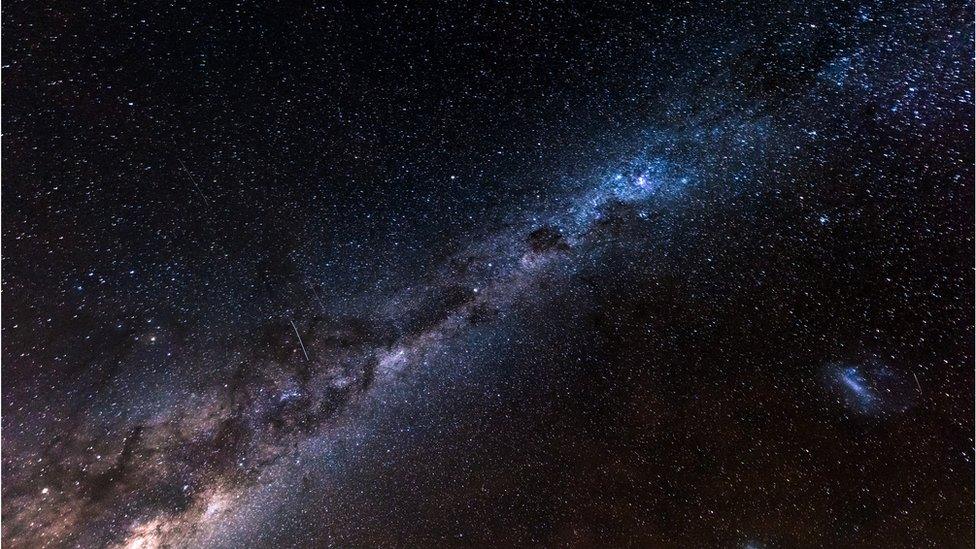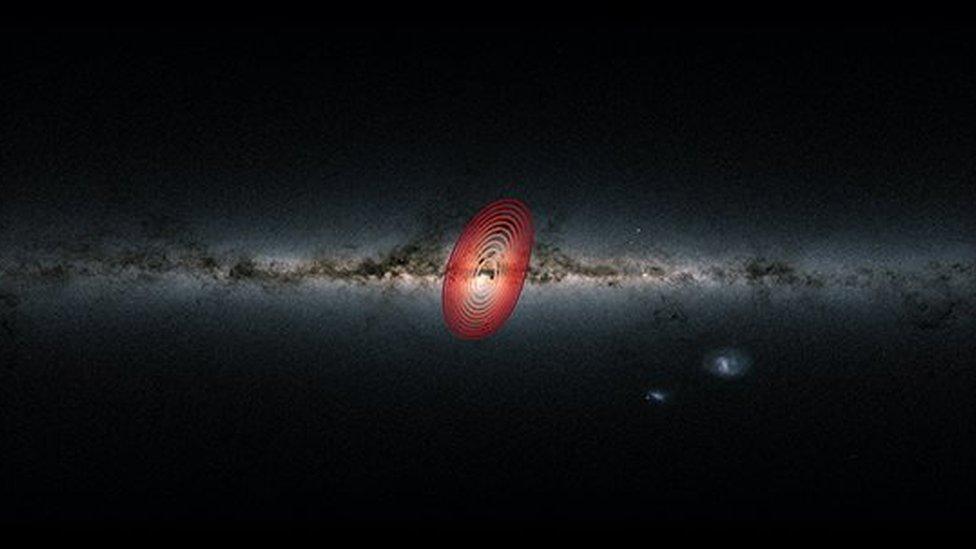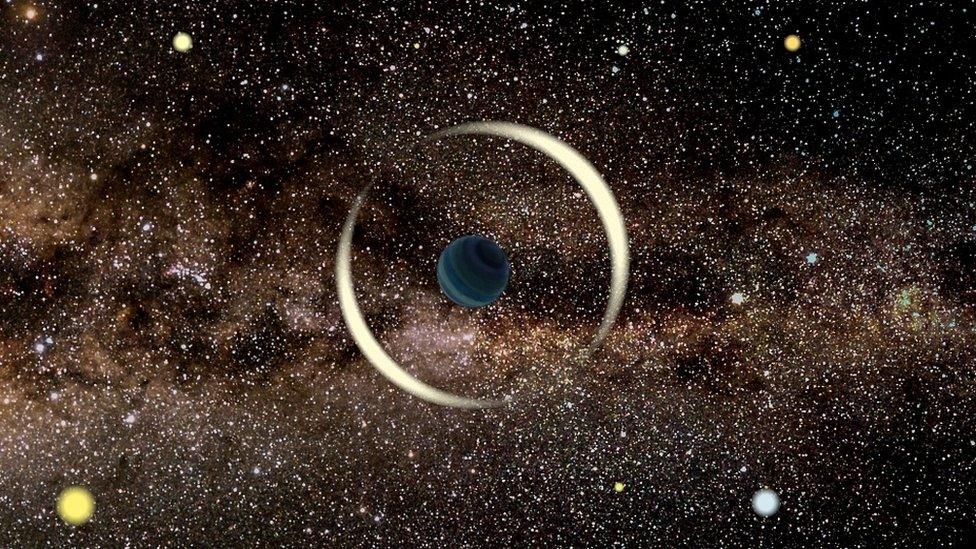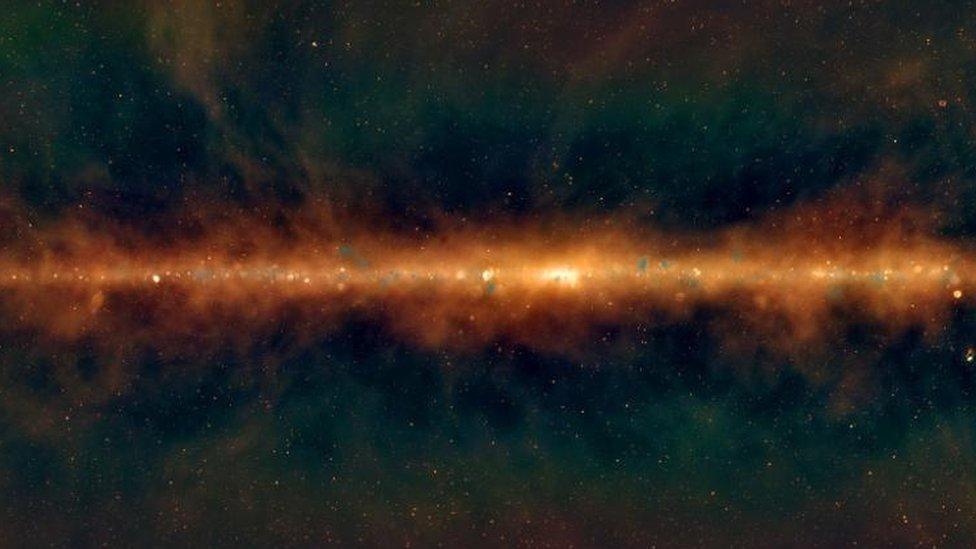Meet 'Heracles', a 10 billion year old fossil galaxy
- Published
- comments

A "fossil galaxy" has just been discovered inside of our Milky Way, and although it's a new discovery, researchers think it's been there for around 10 billion years!
They think the dead galaxy collided with the Milky Way back when our galaxy was still at a very young age.
The Milky Way is a spiral galaxy made up of many stars and is the galaxy where planet Earth is found.
Scientists think that the fossil, known as Heracles, could change our understanding of the history of the Milky Way, and how it was formed.
Astronomers named it Heracles, after the ancient Greek hero who received the gift of immortality when the Milky Way was created.
What do we know about the galaxy?
It's very big! In fact researchers think that what's left of the fossil galaxy make up about a third of the spherical halo around the Milky Way.
But despite its size, astronomers were not able to see it until they uncovered detailed information about tens of thousands of stars.

Dr Ricardo Schiavon, of Liverpool John Moores University's Astrophysics Research Institute, said: "To 'catch sight' of that galaxy is awesome.
"It is really small in the cosmological context - only 100 million stars - but accounts for almost half the mass of the entire Milky Way halo."
How did the team discover it?
Dr Schiavon said: "To find a fossil galaxy like this one, we had to look at the detailed chemical make-up and motions of tens of thousands of stars.
"That is especially hard to do for stars in the centre of the Milky Way, because they are hidden from view by clouds of interstellar dust.
A team of astronomers analysed data from the Apache Point Observatory Galactic Evolution Experiment (Apogee) project.
This project has gathered information on more than half a million stars across the Milky Way.

Dr Schiavon said: "Apogee lets us pierce through that dust and see deeper into the heart of the Milky Way than ever before."
To separate stars belonging to Heracles from those of the original Milky Way, the team used Apogee instruments to measure the chemical compositions as well as the velocities of the stars.
Danny Horta, a graduate student at Liverpool John Moores University, said: "Of the tens of thousands of stars we looked at, a few hundred had strikingly different chemical compositions and velocities.
"These stars are so different that they could only have come from another galaxy.
"By studying them in detail, we could trace out the precise location and history of this fossil galaxy."

This is the Milky Way from above, while the coloured rings show the rough extent of the fossil galaxy known as Heracles
What have they learned so far?
Based on their findings, the researchers say the collision between Heracles and Milky Way "must have been a major event in the history of our galaxy".
They believe this makes the Milky Way unusual because "most similar massive spiral galaxies had much calmer early lives".
Dr Schiavon said: "As our cosmic home, the Milky Way is already special to us, but this ancient galaxy buried within makes it even more special."
- Published30 October 2020

- Published26 November 2019

- Published26 October 2012

